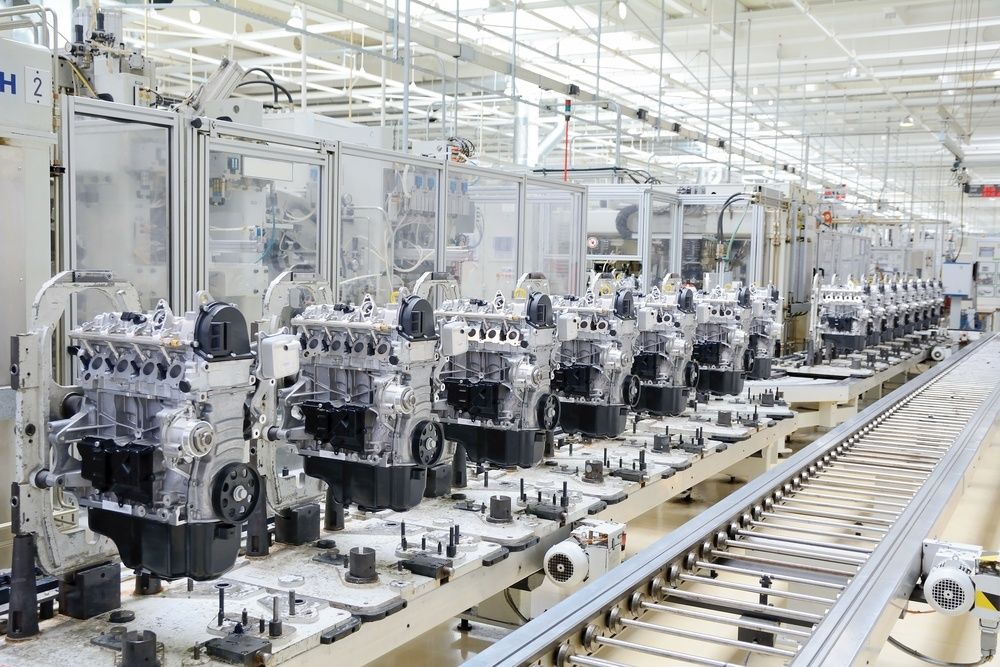How Artificial Intelligence Could Make WiFi Smarter
Corporate networks are becoming more complex by the day. To keep up, enterprise IT teams should start to consider networking tools driven by...
3 min read
 Craig Badrick
:
Oct 29, 2018 6:22:50 AM
Craig Badrick
:
Oct 29, 2018 6:22:50 AM

To achieve maximal efficiency, businesses must process and analyze data in near-real-time — to do that, they need edge computing.
As any business owner knows, even minor inefficiencies tend to add up quickly. A slight flaw in your manufacturing process might only add a few seconds to your total assembly time, but at scale, those few seconds might equate to hundreds of thousands of dollars in additional overhead costs. The real way to remain competitive is not to eliminate one inefficiency, but to find a reliable way of detecting them, gradually shaving time and costs off your work processes and maximizing your potential revenue.
The Internet of Things (IoT) and machine learning promise to offer enterprises exactly that. Using computer vision technology and a variety of different sensors to pinpoint and correct errors in work processes as they happen, companies in the enterprise can not only detect inefficiencies — but understand them well enough to engineer their solutions. However these machine learning technologies will require incredibly low latency, along with massive compute and storage capacity — in other words, they’ll need edge computing.
Imagine you’re on an oil rig, and you want up-to-the-millisecond data on the temperatures of all your pumps. Using a thermocouple IoT sensor, you could program your pump to shut down automatically at the very instant the temperature exceeds a given threshold. Rather than relying on human workers to monitor each pump, creating a higher risk of equipment damage or even dangerous workplace disasters, the rig’s operators could have a virtual guarantee that pumps function at a safe temperature.
Now imagine you’re a manufacturer who wants to prevent faulty products from making it off the assembly line and into the hands of consumers. You could install a camera to take pictures of every product completed in a given day, then assign plant engineers to categorize each product as either acceptable or defective. Using modern computer vision technology, you could then train an algorithm to use this information to automatically prevent defective products from leaving the conveyor belt, significantly cutting shipping costs and enhancing product quality.
Finally, imagine you’re a high school teacher dealing with dozens of students each day. You try your absolute best to remember the specific strengths and struggles each student faces with the curriculum, but it’s hard to deliver this level of personalization for so many individuals. An IoT learning platform might analyze and interpret a student’s eye movements to determine when they’re interested and when their attention is drifting and change the lesson in real-time, bettering their chances of retaining the information they’re trying to take in.
All these potential game-changers in their respective verticals require amazing power to react almost immediately to their surroundings. Edge computing makes all this possible by enabling enterprises to process and store data in the same place it’s being created, greatly reducing latency. While typical network connections may seem sufficient, there are a number of reasons the edge is seen as critical to the real-time functioning of these technologies.
First, there’s the fact that today’s enterprise networks are under pressure from both the growth of the IoT and the BYOD movement to support a rapidly growing number of connections. This limits bandwidth, something that IoT and AI technologies will need plenty of if they’re going to work as quickly and effectively as they’ll need to.
On a more fundamental level, it’s helpful to remember that every millisecond wasted sending information back to a connected server for processing counts. For example, petrochem work environments can become dangerous if conditions aren’t meticulously controlled, and they’re often located in remote areas without much wireless connectivity. Edge computing keeps latency to an absolute minimum and allows mission-critical technology to function correctly from moment-to-moment without an internet connection.
As companies jockey with one another to find more and more reliable ways of eliminating inefficiencies, the demand for faster, “at the edge” computing will escalate. The wide-ranging list of potential applications for both the Internet of Things and machine learning in the enterprise has the potential to transform entire industries. Enterprises able to harness the power of IoT-enabled systems could gain a significant competitive advantage — but they can’t do it without the right infrastructure.
Network infrastructure experts like Turn-key Technologies (TTI) can help businesses move to the edge with cutting-edge technologies that bring siloed device networks into closer integration with the cloud, and address the latent problems associated with distributed networks.
As our roster of satisfied customers and our highly credentialed team of IT experts will tell you, TTI has the skills and experience it takes to take your company and transform it into the IoT- and edge-enabled enterprise of the future.

Corporate networks are becoming more complex by the day. To keep up, enterprise IT teams should start to consider networking tools driven by...

The decentralization of data towards the “edge” of the cloud is on the rise thanks to developments like the IoT and the increasing number of...

The steady rise of cloud computing has compelled many enterprises to pivot away from data center hyper-consolidation and toward more decentralized...